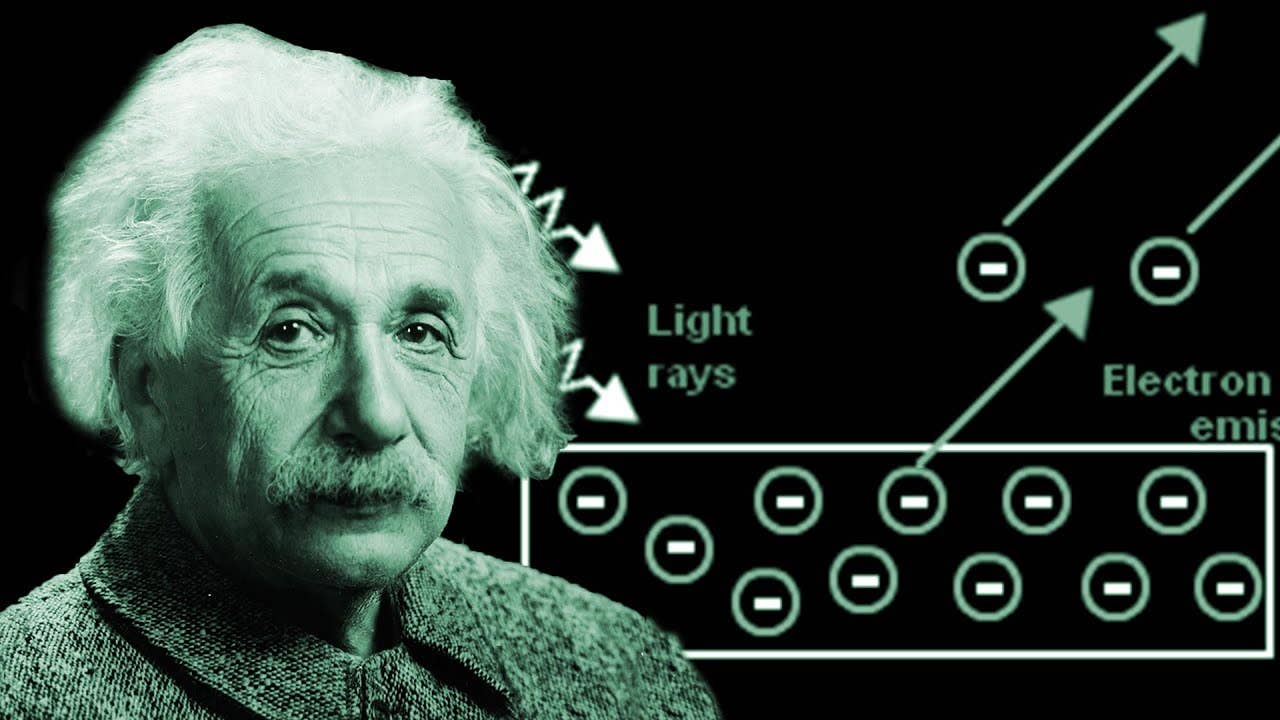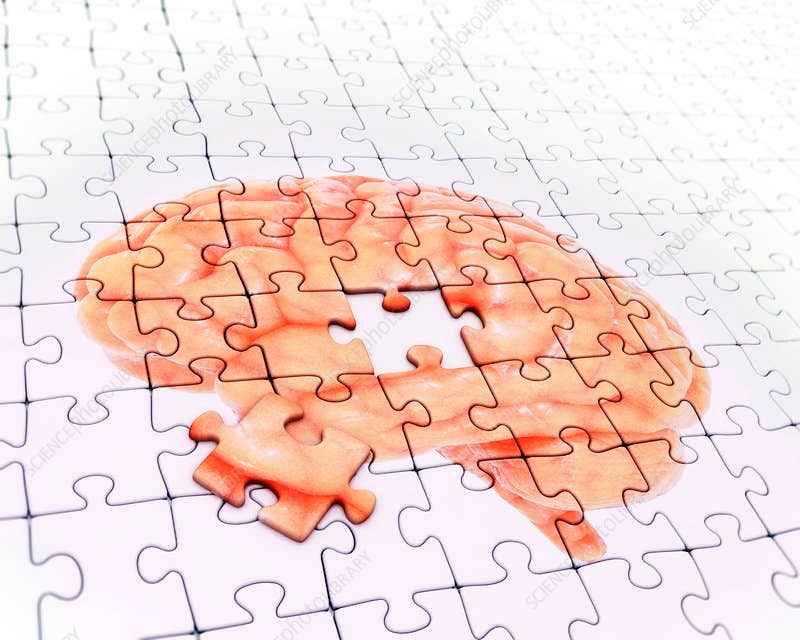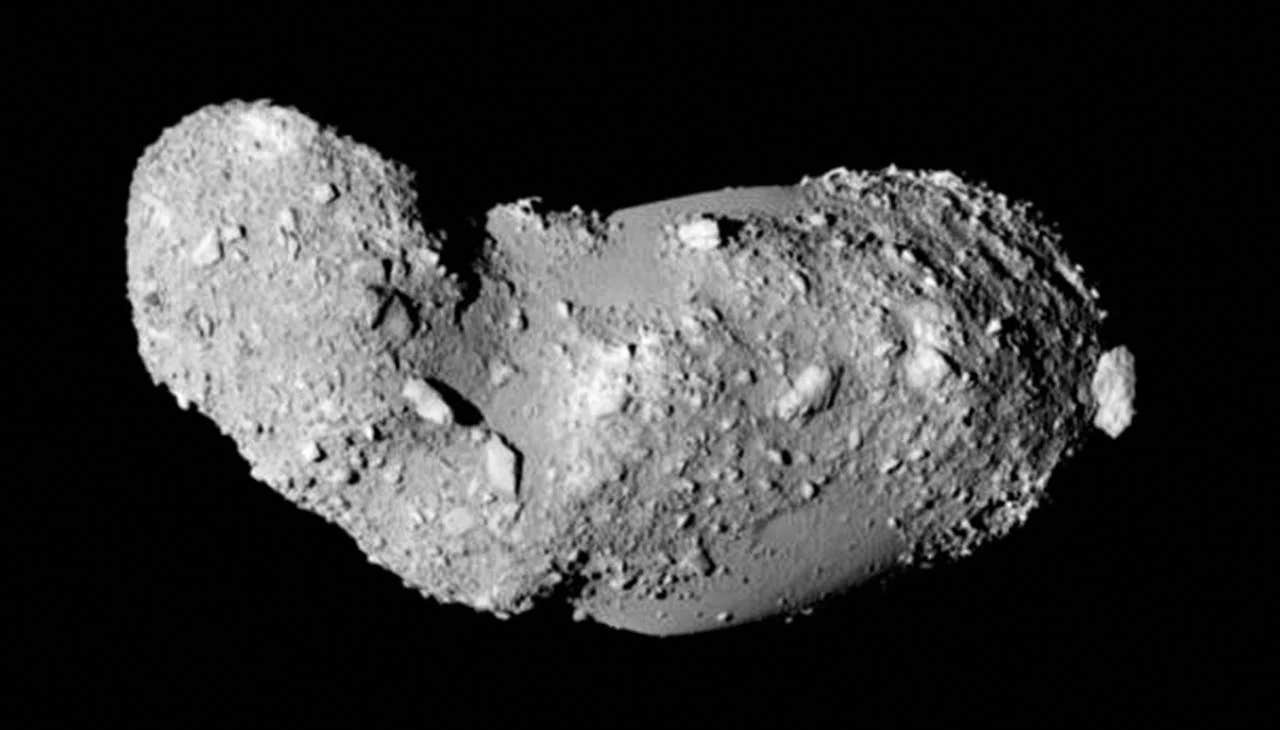Major question in Einstein’s photoelectric effect finally answered
The photoelectric effect is a phenomenon in which electrons are ejected from the surface of a metal when light is incident on it.

[Feb 10, 2022: Markus Bernards, Goethe University Frankfurt]
The photoelectric effect is a phenomenon in which electrons are ejected from the surface of a metal when light is incident on it. (CREDIT: Einstein and the Photo-Electric Effect - Professor Raymond Flood - YouTube)
It is now exactly one hundred years ago that Albert Einstein was awarded the Nobel Prize in Physics for his work on the photoelectric effect. The jury had not yet really understood his revolutionary theory of relativity – but Einstein had also conducted ground-breaking work on the photoelectric effect. With his analysis he was able to demonstrate that light comprises individual packets of energy – so-called photons. This was the decisive confirmation of Max Planck’s hypothesis that light is made up of quanta, and paved the way for the modern quantum theory.
Although the photoelectric effect in molecules has been studied extensively in the meantime, it has not yet been possible to determine its evolution over time in an experimental measurement. How long does it take after a light quantum has hit a molecule for an electron to be dislodged in a specific direction? “The length of time between photon absorption and electron emission is very difficult to measure because it is only a matter of attoseconds,” explains Till Jahnke, the PhD-supervisor of Jonas Rist. This corresponds to just a few light oscillations. “It has so far been impossible to measure this duration directly, which is why we have now determined it indirectly.” To this end the scientists used a COLTRIMS reaction microscope – a measuring device with which individual atoms and molecules can be studied in incredible detail.
The researchers fired extremely intense X-ray light – generated by the synchrotron radiation source BESSY II of Helmholtz-Zentrum Berlin – at a sample of carbon monoxide in the centre of the reaction microscope. The carbon monoxide molecule consists of one oxygen atom and one carbon atom. The X-ray beam now had exactly the right amount of energy to dislodge one of the electrons from the innermost electron shell of the carbon atom. As a result, the molecule fragments. The oxygen and carbon atoms as well as the released electron were then measured.
The photoelectric effect is a phenomenon in which electrons are ejected from the surface of a metal when light is incident on it. (CREDIT: Byjus)
Related Stories
“And this is where quantum physics comes into play,” explains Rist. “The emission of the electrons does not take place symmetrically in all directions.” As carbon monoxide molecules have an outstanding axis, the emitted electrons, as long as they are still in the immediate vicinity of the molecule, are still affected by its electrostatic fields. This delays the release slightly – and to differing extents depending upon the direction in which the electrons are ejected.
As, in accordance with the laws of quantum physics, electrons not only have a particle character but also a wave character, which in the end manifests in form of an interference pattern on the detector. “On the basis of these interference effects, which we were able to measure with the reaction microscope, the duration of the delay could be determined indirectly with very high accuracy, even if the time interval is incredibly short,” says Rist. “To do this, however, we had to avail of several of the possible tricks offered by quantum physics.”
On the one hand the measurements showed that it does indeed only take a few dozen attoseconds to emit the electron. On the other hand, they revealed that this time interval is very heavily dependent on the direction in which the electron leaves the molecule, and that this emission time is likewise greatly dependent on the velocity of the electron.
These measurements are not only interesting for fundamental research in the field of physics. The models which are used to describe this type of electron dynamics are also relevant for many chemical processes in which electrons are not released entirely, but are transferred to neighbouring molecules, for instance, and trigger further reactions there. “In the future such experiments could also help to better understand chemical reaction dynamics therefore,” says Jahnke.
For more science stories check out our New Discoveries section at The Brighter Side of News.
Note: Materials provided above by Goethe University Frankfurt. Content may be edited for style and length.
Like these kind of feel good stories? Get the Brighter Side of News' newsletter.
Tags: #New_Discoveries, #Light, #Electrons, #Research, #Einstein, #Quantum, #Science, #Particle_Physics, #The_Brighter_Side_of_News
Joseph Shavit
Head Science News Writer | Communicating Innovation & Discovery
Based in Los Angeles, Joseph Shavit is an accomplished science journalist, head science news writer and co-founder at The Brighter Side of News, where he translates cutting-edge discoveries into compelling stories for a broad audience. With a strong background spanning science, business, product management, media leadership, and entrepreneurship, Joseph brings a unique perspective to science communication. His expertise allows him to uncover the intersection of technological advancements and market potential, shedding light on how groundbreaking research evolves into transformative products and industries.



